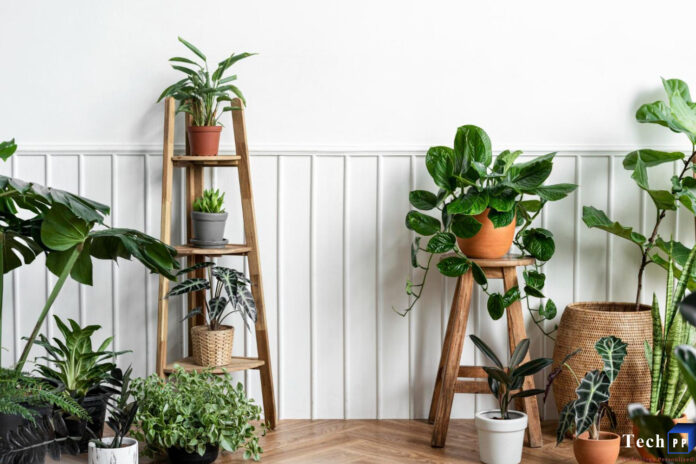Indoor plants bring life to any space, but keeping them healthy can be challenging. With simple tips and strategies, you can easily maintain vibrant, thriving houseplants year-round.
Start with the Right Plant
The foundation of successful plant care is choosing varieties suited to your lifestyle and space. Some houseplants demand attentive care, while others are practically indestructible. If you’re new to plant parenthood or have a busy schedule, start with beginner-friendly options such as:
- Snake Plant (Sansevieria)
- Pothos (Epipremnum aureum)
- Spider Plant (Chlorophytum comosum)
- ZZ Plant (Zamioculcas zamiifolia)
- Peace Lily (Spathiphyllum)
Do some quick research on any plant before bringing it home. Take the time to find out its ideal light, watering needs, and general temperament.
Understand Light Requirements
Light is one of the most crucial factors in plant health. Not all houseplants want the same amount or type of light. Here’s how to get it right:
- Bright, indirect light works for most houseplants. Think of a spot near a window, but not directly in the sun’s path.
- Low-light plants thrive in rooms that don’t get much sun, making them ideal for offices or bathrooms.
- Direct sunlight can scorch delicate leaves. If your space is very sunny, choose robust plants like succulents or cacti.
Observe your space at different times during the day to see how the light moves. If your plant seems to be reaching toward the window or its color fades, it might need more light.
Master the Art of Watering
Too much water is one of the most common killers of houseplants. Remember, the roots need both water and oxygen to survive. Overly wet soil leads to root rot, a surefire way to lose a plant. Here’s how to avoid the pitfalls:
- Check the soil before watering. Stick your finger an inch into the soil. If it feels dry, it’s time to water. If it’s still damp, wait a few more days.
- Use pots with drainage holes. Excess water should always have a place to go.
- Adjust frequency to the season. Plants typically need less water in winter and more in growing seasons like spring and summer.
Don’t get caught in a rigid schedule. Plants will tell you what they need if you pay a little attention.
Provide the Right Pot and Soil
Healthy houseplants start with the right foundation. The ideal container and potting mix can make all the difference.
- Always choose a pot with a drainage hole. This prevents water from pooling at the roots.
- Select appropriate soil. Regular garden soil can be too dense for potted plants. Buy a mix suited to your species, such as cactus soil for succulents or an orchid mix for orchids.
- Repot as needed. If roots start growing out of the drainage hole, or the plant looks stunted, it may be time for a larger pot.
Repotting every year or two keeps your plant healthy and gives it room to grow.
Maintain Humidity and Temperature
Many houseplants are native to tropical climates and crave humidity. Here’s how you can help them thrive indoors:
- Misting leaves occasionally can give a humidity boost, but don’t overdo it.
- Use a humidifier in dry environments, especially during winter.
- Group plants together to create a microclimate with higher humidity.
- Avoid placing plants near heaters or drafty windows. Sudden temperature changes can stress them.
Most houseplants prefer temperatures between 60°F and 75°F. Watch for yellowing leaves and dropped foliage, which can signal stress from dry air or temperature fluctuations.
Feed Your Plants Wisely
Just like us, plants need nutrition. However, overfeeding can do more harm than good.
- Use a balanced houseplant fertilizer. Look for products with equal parts nitrogen, phosphorus, and potassium (marked as N-P-K on the package).
- Fertilize during growth periods. Apply fertilizer every 4-6 weeks during spring and summer. Cut back or stop in the fall and winter when growth slows.
- Follow instructions carefully. Too much fertilizer can burn roots and damage plants.
Keep an Eye Out for Pests and Problems
Plants are occasionally bothered by pests like spider mites, aphids, or fungus gnats. Keep an eye out for:
- Sticky residue on leaves
- Small webs or holes
- Tiny bugs around soil
If you spot an issue, isolate the plant and gently clean the leaves with soapy water. For persistent infestations, consider natural insecticidal solutions.
Yellow leaves, brown tips, and drooping stems can signal overwatering, underwatering, or issues with light. Investigate and adjust your care routine as needed.
Rotate and Prune Regularly
- Rotate your plant every few weeks to encourage even growth.
- Trim dead or yellowing leaves to keep the plant healthy and looking its best.
- Pinch back leggy growth on vining plants to stimulate bushier growth.
Patience is Key
Don’t be discouraged by a few lost leaves or minor mishaps. All plant parents make mistakes. Plants are living things, and with a bit of patience, they’ll often bounce back. Whether you’re caring for a small indoor plant or managing greenery on a larger scale, like commercial landscape construction in the Bay Area, the same principles apply—patience and care go a long way.
Conclusion
Caring for houseplants is easier than you think. By choosing the right plants, monitoring their environment, and adjusting care, you can create a fresh, vibrant home. With curiosity and consistency, anyone can grow a green thumb!


